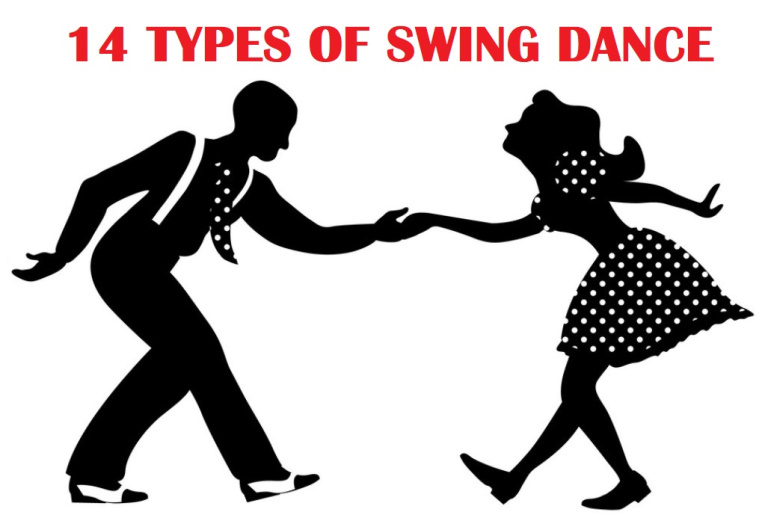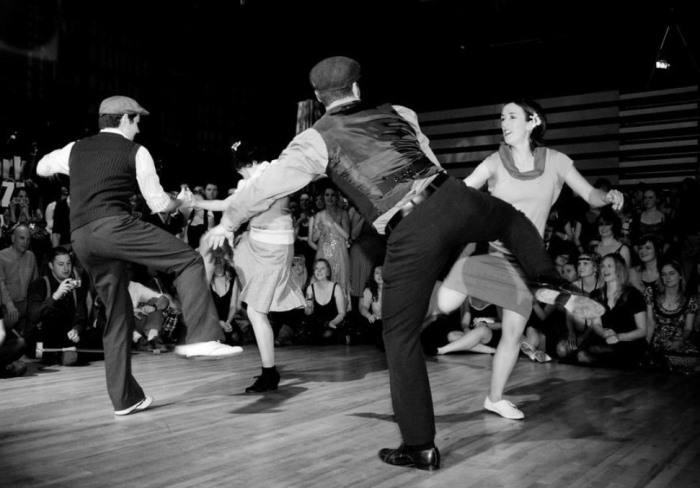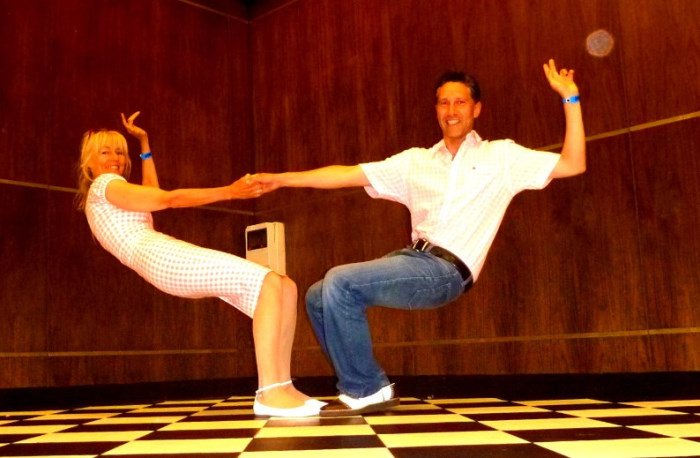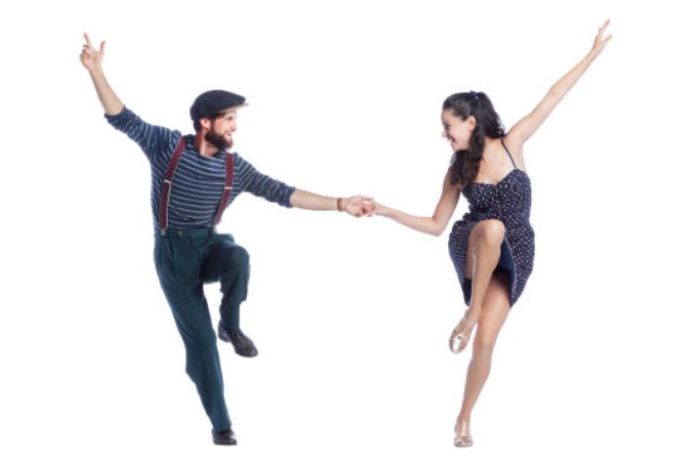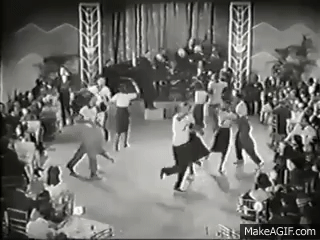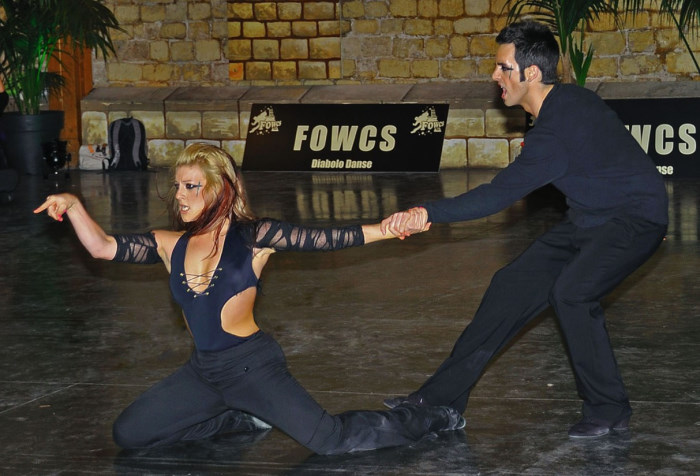If you’re a fan of vintage dance forms, you will have heard of swing dancing before. It was a staple of Western culture in the 1920s.
The original type of swing dance – Lindy Hop – took inspiration from Jazz music, which was huge at the time.
Since then, there have been countless variations, like West Coast Swing, Balboa, Charleston, and Collegiate Shag. The term “swing dance” has grown to become an umbrella term rather than a specific dance form.
Feeling like re-discovering all of the different styles and variations of swing dancing that have cropped up since the 20s? This is your definitive guide to the many forms of swing dancing.
Table of Contents
Types of Swing Dance: 1920s to Early 1930s
As mentioned earlier, swing dancing is a very old form of social dance. Its roots reached back to the 1920s.
From the 1920s to the early 1930s, the popularity of swing dancing and music hasn’t reached its apex yet.
Still, it’s a very interesting period of swing dancing. Many swing dancing styles in this period lay the foundation for all the other variations in the future.
Lindy Hop – The First Form of Swing Dance
Lindy Hop is credited to be the first form of swing dancing to exist. It was the form that kick-started the Swing Era from the 1930s to the 40s.
It is a type of swing dance popularized by African American communities and took inspiration from their culture and traditional dances.
A key characteristic of the Lindy Hop is that it is danced to a basic 8-count circular rhythm (also known as “swing out”). However, Lindy Hop emphasizes adaptability on the dancer’s part.
So, as the music progresses, you can blend a few 8-count as well as 6-count moves into the routine, as well.
The name “Lindy Hop” is attributed to an interview done by “Shorty” George Snowden. The journalist had asked him what kind of dance he was performing.
At the time, Charles Lindbergh had just finished his famous solo flight across the Atlantic Ocean, so “Shorty” George just answered: “The Lindy Hop”. The name stuck.
Jitterbug
Like “swing dance”, the term “Jitterbug” has grown to become an umbrella term for many different styles of dancing. But all of these styles have one thing in common: the dancers look like they’re having the “jitters”.
The name “Jitterbug” came from a recording by Cab Calloway called the “Call of the Jitterbug”. Making the term even more popular was the ensuing movie “Cab Calloway’s Jitterbug Party”.
From the 1920s onward, Jitterbug, as well as swing dancing, became extremely popular in the U.S. up until the end of the Second World War.
In the modern day, a lot of people use the term “Jitterbug” to refer to swing dancing in general.
However, the savvier people will understand it as the East Coast swing dancing style, which is separate from the West Coast style or the Lindy Hop.
Balboa
Also known as “Bal”, the Balboa is an eight-count dance that’s often performed in a close position (both partners facing one another and are positioned in very close proximity).
In the beginning, Balboa was a very conservative and simple dance. It evolved mostly from the more conservative dance halls in Southern California.
In these halls, there wasn’t much space for the dancers to “swing” around and there were usually strict dress codes and codes of conduct that people had to follow.
Therefore, this early form of Balboa (called “Pure Balboa”) didn’t have the frenetic energy or the carefree attitude of Charleston or Lindy Hop forms.
Pure Balboa was danced with both partners in upright postures, chests in contact with one another. There were no spins and turns to Pure Balboa, so it was a very simple (and conservative) dance.
That’s where Bal Swing came in. Bal Swing broke off all of the strict rules of Pure Balboa. Dancers began to experiment with more variations and fancier, more complex moves.
People were no longer forced to keep their chests in contact with one another all the time and, more importantly, turns, spins, dips, and air steps were introduced.
Balboa in general is quite versatile in their choice of music. Most preferred to dance to fast jazz with tempi between 180 to 320 BPM. However, slower tunes were also on the table and could go as slow as 170-190 BPM.
Collegiate Shag
Originating from the Carolinas in the 1920s, the Collegiate Shag (or simply the “Shag”) spread throughout the U.S. in the 1930s.
Unlike other dance forms on this list, the origin of the Shag wasn’t very well-documented.
Nevertheless, one thing we do know is that it was highly popular among college students at the time (hence the name “Collegiate Shag”).
The Shag is typically danced on top of pre-swing jazz music and uptempo swing music (tempi are between 185 to over 200 BPM).
Lindy Charleston
The Lindy Charleston is a variation of the original Charleston-style swing dance of the 20s.
What’s different between the Lindy Charleston and the original Charleston is that the pulse is lowered to match that of the Lindy Hop.
So, the Lindy Charleston is a fusion between the Lindy Hop and the Charleston (which explains the conjoined name).
Types of Swing Dance: Late 1930s to Early 1940s
St. Louis Shag
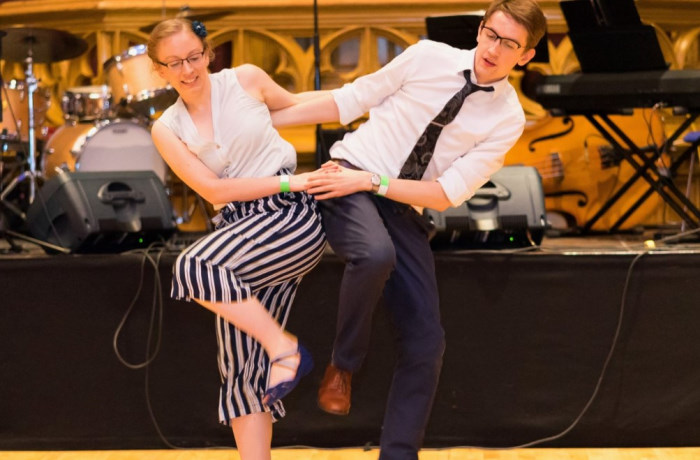
The St. Louis Shag, similar to the Collegiate Shag, is simply referred to as the “Shag” in most clubs and dancing circles.
However, it is different from the Collegiate in that it evolved from and eventually separated from the Charleston-style swing dance.
This variation of the Shag is a close position dance that’s usually performed to a stationary 8-count basic. In a routine, most of the moves are triple steps and kicks. Because of its high-tempo nature, the St.
Louis Shag is typically danced on top of stomp, jump, or boogie-woogie music.
The name is a tribute to its point of origin: St. Louis, Missouri.
Big Apple
The Big Apple originated from the dances of the African American communities in the early 20th century.
Around the 1930s, African youths began to adapt the old dance to what’s now known as the “Big Apple” form.
The name was said to originate from where the dance first began to appear and popularize: the Big Apple Club in Columbia, South Carolina.
Types of Swing Dance: Late 1930s to Early 1940s
The late 1930s to the early 1940s are the heyday of swing dance. Such was the popularity of swing dancing in this period that it’s straight out called the “Swing Era” by historians.
This period lasted from 1933 to 1947. It saw not just the invention of many variations of swing dance throughout the country, but also the formation of influential swing dance music bands and troupes.
East Coast Swing

The East Coast Swing is a variation of the reduced Lindy Hop style. From a basic 8-count, the rhythm is clocked down to only a basic 6-count. The style evolved as swing dance music picked up steam in the 1940s.
Arthur Murray – a legendary ballroom dancer – was also to thank for the upshot in popularity that East Coast Swing enjoyed in the 40s.
It is considered to be the swing dance form for everyone. Most of the moves are basic and the footwork is simple. So, anyone can jump right in with minimal training.
Additionally, it isn’t picky in terms of music. You can swing dance East Coast style using music with slow, medium, or fast tempi.
Any genre will do. It’s not unusual for people to dance to rock-and-roll music outside of the traditional selections of jazz.
Carolina Shag
Carolina Shag is often associated with beach music and is often danced to rhythm-and-blues songs. At its most fundamental level, the Carolina Shag is danced in a six-count, eight-step pattern in a dance slot.
This form of swing dance is thought to have originated along the Eastern Seaboard.
Specifically, in Cherry Grove Beach, South Carolina. But the name “Carolina Shag” was officially coined by party-goers in Carolina Beach, North Carolina.
Jive
Unlike most other variations of swing dancing on this list, Jive is a rather international dance in terms of origin.
The original Jive dance traced its roots to the Eastern swing form that was taken to England by American troops during World War II. There, it evolved and came back to the U.S. being an entirely separate form.
Jive is a very upbeat and energetic form of swing dancing. The dancers look like they’re hopping up and off the ground.
Modern Jive (Ceroc)
Modern Jive (also called “Ceroc” and “LeRock”) was developed a lot later in the 1980s. According to many sources, the form seemed to have come from the French adaptation of the original Jive.
Structurally, Modern Jive isn’t exactly similar to other forms that are called “Jive”.
Instead of a 6-count pattern, Modern Jive is reduced to a simple box step and emphasizes a simple couple of dance moves. It’s more of a social dance than a technical dance.
Boogie Woogie

Boogie Woogie is famous. Even if you don’t know the context, there’s a good chance you’ve heard of it before. The dance was developed in the 40s during the rise of what’s known as boogie-woogie music.
At the moment, it’s still a popular dance form in Europe and is considered to be the European analog to the East Coast swing dance. This is because it uses a basic 6-count pattern, which is the hallmark of the American ballroom dance scene.
Typically, boogie-woogie is danced to rock and boogie-woogie music, but not jazz.
D.C. Hand Dancing (Washington Hand Dancing)
As its name suggests, the dance form originated in the Washington D.C. region sometime in the mid-1950s.
This new form of swing dance began to appear within the ballroom as more and more dancers danced and innovated to Motown music.
The Washington Hand Dancing style is done using a 6-step, 6-count dance rhythm.
Good dancers of this form are very smooth in their movements and footwork. A routine includes very complicated hand-turns and close-ins.
West Coast Swing
The West Coast Swing, which is developed some time during the 1940s, is a modification of the Los Angeles-style Lindy Hop.
It is danced to a wide variety of music, ranging from blues, country western, and jazz, to pop, funk, and rock-and-roll.
It is one of the most popular modern swing dance forms these days.
Forms of Swing Dance Today
Although swing dancing was most popular in the 30s-40s period and its popularity has diminished significantly, it’s still not dead yet.
Swing dancing is still a thing in many ballrooms and clubs not just in the US, but worldwide.
Many old swing dance forms, like East Coast and West Coast swing dances, are still done. But, these days, there have been many new variations (called Neo-swing) innovated by enthusiasts.
Check them out if you’re interested!
FAQs
1. What’s the Difference Between West Coast and East Coast Swing?
There are many differences between the two styles. From the music, the structure, all the way to the techniques.
In terms of music, East Coast swing styles are characterized by fast blues and rock-and-roll.
Meanwhile, West Coast swing is a lot more adaptable and can be danced to a variety of different music genres and songs. You can even dance to modern pop using West Coast techniques!
Additionally, East Coast swing is a rotational dance, while West Coast swing is a slotted dance.
2. What Is the Difference Between Lindy Hop and Jitterbug?
Lindy Hop is danced to an 8-count basic, while the Jitterbug is danced to a 6-count basic pattern.
Final Words
So, in total, there are 14 major types of swing dance. This list is not all-inclusive.
Over the years, there have been dozens – if not hundreds – of different variations. Nonetheless, if you’re looking for a basic guide to swing dancing, these 14 forms will have covered more than the basics!
